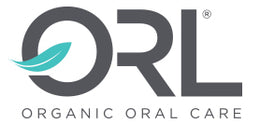Most of us trust the brands we’ve grown up with—Crest, Colgate, Listerine, ACT, Tom’s of Maine, and others—without giving much thought to what’s inside. But what if we told you that many of the most common oral care products on the market today contain harmful ingredients, some of which are even classified as toxic or poisonous?
At ORL, we believe you have a right to know exactly what you’re putting in your mouth—and into your body—every single day.
The Hidden Dangers in Everyday Oral Care
There are over 300 toothpaste and mouthwash products available today that include ingredients flagged for health risks. These aren’t just questionable—they’re listed in PubChem, the open chemistry database maintained by the National Institutes of Health (NIH), as toxic substances.
Here are just a few commonly used ingredients to watch out for:
Sodium Lauryl Sulfate (SLS): A detergent used to create foam, SLS is a known skin irritant and has been linked to canker sores.
Triclosan: Previously common in toothpaste, this antibacterial agent was banned from soaps by the FDA due to its potential for hormone disruption and antibiotic resistance.
Artificial Sweeteners (e.g., Saccharin & Aspartame): While FDA-approved, they remain controversial and are increasingly avoided by health-conscious consumers.
Propylene Glycol: Often used to retain moisture, this compound is also found in antifreeze and can irritate skin and mucous membranes (ATSDR).
Alcohol: While it kills bacteria, alcohol in mouthwash can dry out the mouth and disrupt the oral microbiome. Some studies have explored possible links between high-alcohol mouthwashes and oral cancer, though the topic remains debated.
Fluoride: Long recommended for cavity prevention, fluoride has come under scrutiny due to potential links to thyroid issues and neurotoxicity in high doses. The Journal of the American Medical Association (JAMA) has published studies showing a correlation between prenatal fluoride exposure and lower IQ in children.
Compare for Yourself: ORL vs. National Brands
We’ve taken a close look at popular oral care brands—including Colgate, Crest, ACT, Listerine, Tom’s of Maine, Hello, Boka, Sensodyne, Nature’s Gate, Himalaya, and Lush—and compared their ingredient lists to our own.
The result? ORL is proudly free from over 100 harmful ingredients that appear in leading toothpaste and mouthwash formulas. Compare ingredients yourself using ORL's Compare Tool!
Instead, we use only the best organic and natural ingredients—including essential oils, xylitol (shown to reduce cavities), and plant-based alternatives to synthetic preservatives and flavorings.
🔍 Want to fact-check? You can use the NIH’s PubChem database to look up any ingredient you’re curious about:
👉 https://pubchem.ncbi.nlm.nih.gov
You can also explore the Environmental Working Group's (EWG) ingredient scores for many oral care products:
Transparency is Our Promise
We're committed to giving you the facts—no greenwashing, no fine print. You deserve oral care that supports your whole-body health, not undermines it with hidden toxins or questionable chemicals.
The Bottom Line
Your oral care routine should support your health—not compromise it. With ORL, you're choosing a brand that puts your well-being first and never settles for "good enough."
✅ No toxins
✅ No shortcuts
✅ Just clean, effective, and safe oral care that you—and your family—can feel great about
Ready to make the switch?
👉 Explore ORL’s natural, organic toothpaste and mouthwash now.
#HealthySmileHealthyYou #NonToxicOralCare #IngredientTransparency #FluorideFree #NaturalToothpaste #ORLVsThem



